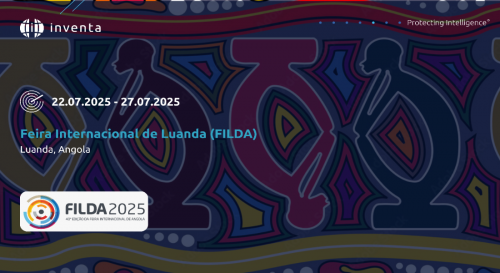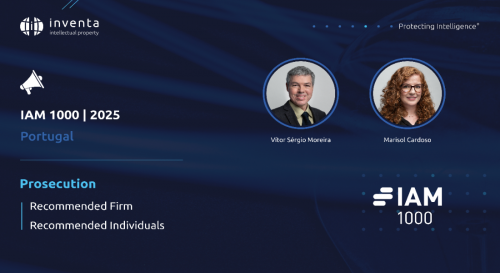
The concept of invention in light of the 10th Amendment of ARIPO's Harare Protocol
Introductory note
By the Resolutions of ARIPO’s Administrative Council, on its 40th Session which was held in Harare, Zimbabwe, in December 2016, amendments to the Harare Protocol were introduced and have been in force since January 1st, 2017.
This 10th amendment to the Harare Protocol - since it was adopted on December 10, 1982 - provides new rules on several aspects related to patents, utility models and industrial models, including substantive examination, patentability, post grant amendments, restricted use of multi-dependent claims, re-establishment of patent and utility model rights and official fees.
This article will focus on the modifications introduced to patentability rules, more precisely, on the concept of invention.
The new rules on patentability
Section 3 of the Harare Protocol covers the rules related to patents. Naturally, it’s in this Section that the new rules on patentability can be found. More precisely, in paragraph 10, letters (h), (i) and (j).
Letter (h) now provides a list of subject-matter that shall not be regarded as inventions: “(i) discoveries, scientific theories and mathematical methods; (ii) aesthetic creations; (iii) schemes, rules and methods for performing mental acts, playing games or doing business, and programs for computers; (iv) presentation of information.”
After this enumeration, letter (i) restricts the exclusion fixed in letter (h) by stating that it “shall exclude the patentability of the subject-matter or activities referred to therein only to the extent to which a patent application relates to such subject-matter or activities as such”.
After addressing the question of what can be considered an invention, the Protocol now provides, in letter (j), that, despite being considered inventions within the meaning of paragraph 10, the following inventions shall not be granted a patent: “(i) inventions the commercial exploitation of which would be contrary to "ordre public" or morality; such exploitation shall not be deemed to be so contrary merely because it is prohibited by law or regulation in some or all of the Contracting States; (ii) plant or animal varieties or essentially biological processes for the production of plants or animals; this provision shall not apply to microbiological processes or the products thereof; (iii) methods for treatment of the human or animal body by surgery or therapy and diagnostic methods practiced on the human or animal body; this provision shall not apply to products, in particular substances or compositions, for use in any of these methods.”
As before, paragraph 10 (a) provides that “Patents shall be granted for any inventions, in all fields of technology, provided that they are new, involve an inventive step and are susceptible of industrial application.” So, one may identify five (main) substantive requirements for a patent to be granted in ARIPO. The first requirement is the existence of an invention identified according to paragraph 10 letter (h) and (I). Secondly, the invention cannot consist of one of the exceptions provided for by letter (j). Naturally, besides complying with these two the other three common requirements must be fulfilled: novelty, inventive step and industrial applicability.
Historical and comparative note on excluded subject matter
Listing subject-matter that cannot be regarded as an “invention” and/or that consists of an exception to patentability is a common way of determining what can be protected by a patent right.
The historic development of the exclusions to patentability concluded in what may be considered a standardization of the laws of several jurisdictions. The Paris Convention did not impose any limitations on patentable subject-matter. The beginning of this standardization may be considered the Patent Cooperation Treaty (PCT), by providing that ISAs are not required to search international applications which subject matter consists on the following: scientific and mathematical theories; plant or animal varieties or essentially biological processes for the production of plants and animals, other than microbiological processes and the products of such processes; schemes, rules or methods of doing business, performing purely mental acts or playing games; methods for treatment of the human or animal body by surgery or therapy, as well as diagnostic methods; mere presentations of information; computer programs to the extent that the International Searching Authority is not equipped to search prior art concerning such programs.
Despite the fact that the PCT did not require substantive harmonization of national or regional laws, this list of excluded subject matter may be considered the foundation of the lists of excluded subject-matter that begun to appear in the 70’s and in the following decades.
Soon after the PCT, in 1973 the European Patent Convention (EPC) established the patentability criteria by providing, in two separate articles: first, besides the traditional requirements, a list of subject-matter that cannot be regarded as inventions; second, a list of exceptions to patentability, independently of excepted subject-matter being an invention accordingly to the previous list.
This development was later reflected on, amongst others, the Eurasian Patent Convention of 1994, the Cooperation Council for the Arab States of the Gulf of 1998, Bangui Agreement of 1999 and the Andean Agreement (Decision 486) of 2000.
Subject-matters that may be considered inventions
As seen before, no definition of “invention” is provided in Harare Protocol. Instead, the new letter (h) of Harare Protocol lists, in a non-finite way, several subject-matter that cannot be regarded as inventions. In this way, instead of positively setting the limits of what is an invention, letter (h) defines the limits of what is covered by the term “invention”, negatively, indicating objects that are not inventions.
Taking into consideration the rules of the jurisdictions indicated in the comparative note above, it is clear that ARIPO’s Administrative Council chose to follow the EPC example. Instead of listing excluded subject matter in a single article, Harare Protocol now provides two different rules: letters (h) and (i) provide the answer to what should be considered an invention and letter (j) determines that some subject-matter, even if considered an invention in light of letters (h) and (i), shall not be granted a patent.
The choice to follow the EPC criteria is clearer taking into account that the wording of these new rules of Harare Protocol are identical to EPC’s, mutatis mutandis. Letters (h) and (i) correspond to numbers 2 and 3 of EPC’s article 52 and letter (j) is a reflection of article 53 EPC.
This finding should be sufficient to conclude that the purpose of this amendment is to introduce to ARIPO’s jurisdiction the legal status quo of EPC, including, not only the written criteria but also, and more important, the interpretation that has been developed by the Boards of Appeal (BoA)
of the European Patent Office (EPO).
Additionally, this opinion is supported by the proposition that not only the patentability criteria developed by EPO’s BoA was built upon the wording of the EPC, but the inverse is also true: the wording of the EPC is the result, in some way, of the patentability criteria developed by EPO’s BoA. The basis of this assertion is that, in the Basic proposal for the revision of the EPC (MR/2/00), from which resulted in 2000 the Convention on the Grant of European Patents, one can read that, despite the Committee on Patent Law and the Administrative Council had advocated modifications to article 52 EPC (more precisely, for the deletion of programs for computers), it was considered that the “technical character” criteria adopted by the BoA of the EPO gave appropriate scope to what should be considered an invention. Therefore, the wording of the EPC wasn’t changed in order to maintain the legal status quo of the concept of invention at that time in Europe (that hasn’t change significantly ever since), i.e. the wording of the EPC wasn’t modified to still be possible to “read” in article 52 EPC the BoA’s “technical character” criteria.
If the wording of the EPC reflects the “technical character” criteria of the EPO’s BoA and if the ARIPO’s Administrative Council decided to adopt that wording, the conclusion must be that the intention is to introduce the “technical character” criteria in this jurisdiction.
With this ground it should be concluded that the concept of invention in light of the 10th amendment of ARIPO’s Harare Protocol covers any technical solution for a technical problem and the subject-matter listed in letter (h) should only be excluded from patentability when it does not bear technical character, i.e. when it appears in a patent application “as such”.
Conclusion
The 10th amendment of the Harare Protocol, in what patentability is concerned, harmonizes ARIPO’s legal framework with a vast part of other jurisdictions’ patent law, by listing subject-matter that is excluded from patentability.
It is clear that this amendment reflects a choice to follow the EPC example and, consequently, the EPO practice, as the wording of these new rules are identical to the corresponding provisions of EPC.
The meaning of identifying purpose of introducing the EPO practice in ARIPO’s jurisdiction is that an invention shall be considered a technical solution for a technical problem and that the subject-matter listed in letter (h) should only be excluded from patentability when it does not bear technical character, i.e. when it appears in a patent application “as such”.
Currency Info
Final charges will be made in USD.
Currency conversion is for information purposes only and accuracy is not guaranteed. Overseas customers are encouraged to contact their bank or credit card provider for details on any additional fees these institutions may include for currency conversion.
- USD 312.389 NGN
Territory List
There are no results for your search.
- Africa
- Algeria
- Angola
- Benin
- Botswana
- Burkina Faso
- Burundi
- Cameroon
- Cape Verde
- Central African Republic
- Chad
- Comoros
- Congo (Republic)
- Côte d'Ivoire
- Democratic Republic of the Congo
- Djibouti
- Egypt
- Equatorial Guinea
- Eritrea
- Eswatini (Swaziland)
- Ethiopia
- Gabon
- Gambia
- Ghana
- Guinea
- Guinea-Bissau
- Kenya
- Lesotho
- Liberia
- Libya
- Madagascar
- Malawi
- Mali
- Mauritania
- Mauritius
- Mayotte
- Morocco
- Mozambique
- Namibia
- Niger
- Nigeria
- Réunion
- Rwanda
- Sao Tome and Principe
- Senegal
- Seychelles
- Sierra Leone
- Somalia
- South Africa
- South Sudan
- Sudan
- Tanzania (mainland)
- Togo
- Tunisia
- Uganda
- Western Sahara
- Zambia
- Zanzibar
- Zimbabwe
- Africa (OAPI)
- Africa (ARIPO)
- Other
- East Timor
- Macao
- Maldives
- Portugal
- European Patent (EPO)
- European Union Trademark (EUTM)
- International Trademark (Madrid System)
- Patent Cooperation Treaty (PCT)




